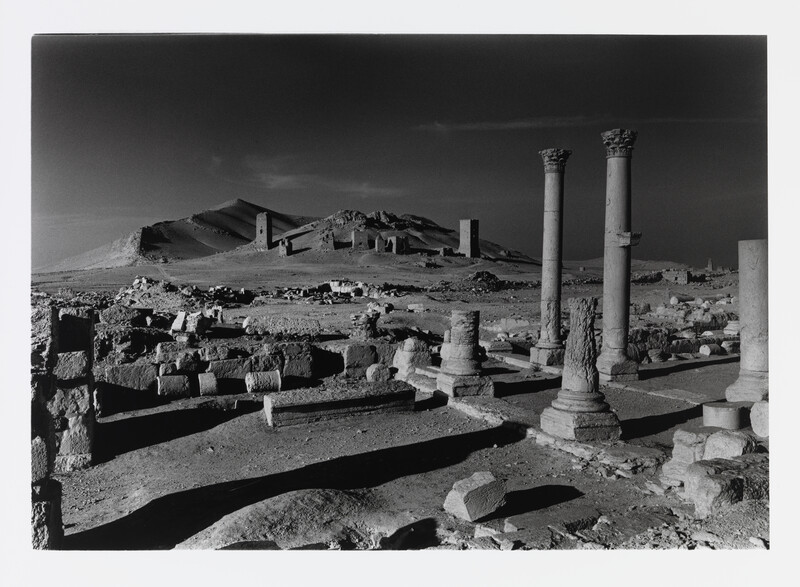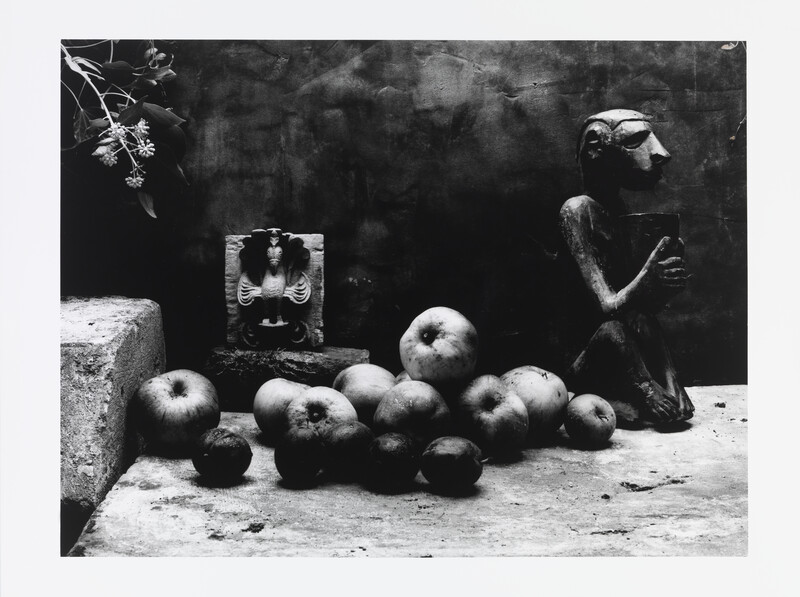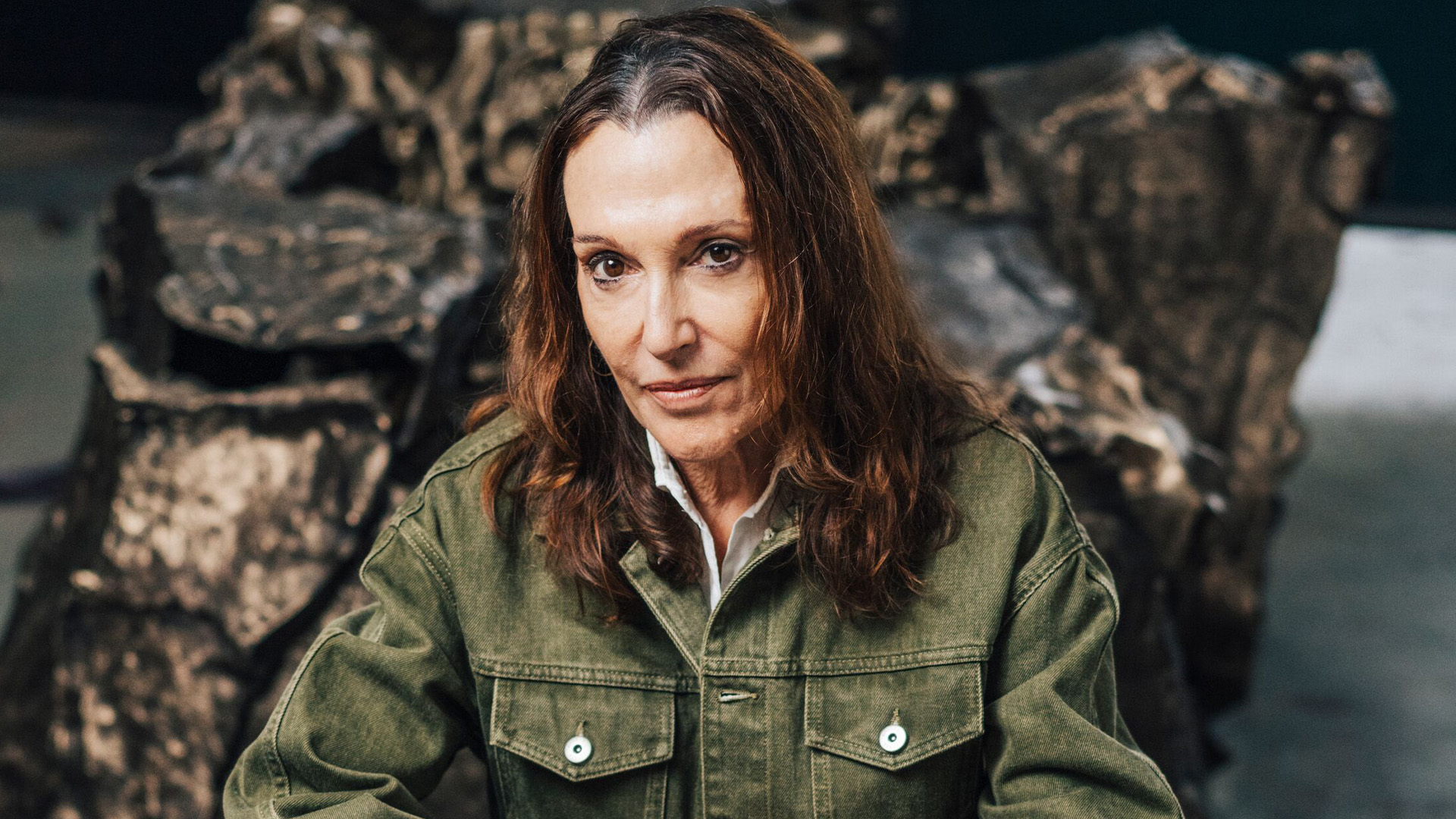Teachers’ Notes: ‘Don McCullin. The Stillness of Life’

Don McCullin, The Extreme Arctic, Norway, 2019 © Don McCullin
Teachers’ Notes: ‘Don McCullin. The Stillness of Life’
This resource has been produced to accompany the exhibition, ‘Don McCullin: The Stillness of Life’ at Hauser & Wirth Somerset from 25 January – 4 May 2020.
About Don McCullin
Sir Don McCullin CBE was born in Finsbury Park, London in 1935. He left school at 15 without any qualifications. He signed up to National Service in the RAF, and became a photographic assistant working on aerial reconnaissance photography. Between 1966 and 1984, he worked for The Sunday Times Magazine under Editor-in-Chief Harold Evans and Art Editor David King. It was during this time he released his most celebrated images. He has since expanded his oeuvre with independent trips to India, Africa and the Middle East, continuing to raise awareness of global humanitarian issues and war-torn areas with unflinching honesty. In 1993, McCullin was the first photojournalist to be made a Commander of the British Empire (CBE) and in 2017 McCullin was knighted in the New Year Honours for his lifetime services to photography.
He is the author of more than a dozen books, and is recognised as one of the greatest war photographers in history. In 2011, Tate Britain presented a solo display comprising a wide selection of his subjects, and the Imperial War Museum displayed Shaped By War, featuring over 250 photographs, contact sheets and personal memorabilia. In 2013, McCullin was honored with an exhibition at Visa pour l’Image, the International Festival of Photojournalism in Perpignan. This exhibition follows McCullin’s major retrospective at Tate Britain in Spring 2019, featuring over 250 photographs that celebrate the scope and achievements of his entire career. This comprehensive survey will travel to Tate Liverpool in June 2020. Don McCullin has lived in Somerset for over 30 years.
What does Don McCullin’s work look like?
Don McCullin is regarded as one of the most accomplished war photographers of recent times. However, this exhibition presents over 60 black and white landscape photographs of wild heavens, haunting vistas and meditative still lifes that resonate with human emotion. Many of the images come from his extensive travels to remote locations throughout the United Kingdom, Europe and Asia. The largest body of work featured in the exhibition explores local areas within walking distance of the photographer’s home, including ‘Creech Hill in the distance, Somerset’ (1990s), ‘The Dew Pond, Somerset’ (1988) and ‘Batcombe Vale’ (1992-93). McCullin evokes dramatic painterly representations of his home county with quiet confidence, shifting between the flooded lowlands of the Somerset levels to woodland streams, nearby monuments and historic hill forts.

Don McCullin, Batcombe Vale, 1992 – 1993 © Don McCullin
Pensive rural scenes include Hadrian’s Wall, Northumberland; the River Cam, Cambridgeshire; Rannoch Moor and Glencoe, Scotland. These images are presented in contrast to earlier works featuring urban landscapes and are taken in the 1960s and 1970s, portraying communities in Northern England and Scotland which have undergone considerable economic and social hardship. Some of the still lifes are platinums and some are gelatins. They can be seen in the space between the Rhoades and Bourgeois galleries.
Why does he take his photographs?
Having been evacuated to the safety of Somerset during the Blitz, McCullin has had a lifelong connection with the open farmland and hill country of the South West, feeling at peace within the solitude of the expansive landscape. The majority of his photographic work documents the second part of a century dominated by war, mass emigration, famine and political upheaval and so McCullin has often referred to the British countryside as his greatest salvation. The recent ‘Southern Frontiers’ project provides an important connection between these key strands of conflict and landscape. Beginning in the early 2000s, McCullin began documenting physical remains of the colossal Roman Empire in North African and Levantine landscapes, including the ancient site of Palmyra. McCullin travelled through Lebanon, Syria, Jordan, Morocco, Algeria, Tunisia and Libya, returning to Syria recently to document the decimation of these ancient sites by the so-called Islamic State.

Don McCullin, Looking forward to the valley of the tombs which Isis have destroyed, 2016 © Don McCullin
This driving force to connect and reflect on sacred locations and diverse communities continues further afield across to India and Indonesia, locations where McCullin has documented local rituals, festivals and architecture, enabling western viewers to meditate on the richness of world culture and daily praxis. Similar to his landscapes, the still life compositions and the manner of their image making provides a form of escapism from his critical social documentation that brings himself (and his audience) almost unbearably close to the experience of people living under conditions that we can hardly imagine.
How does he make his photographs?
McCullin’s photographs are nearly always taken in black and white on a manual camera using film, which allows him to control the aperture, shutter speed and other camera settings. This allows for control over the brightness, focus, depth of field and exposure of the image. He can decide whether to zoom in to create a close up or to take a long or medium shot. Camera film was traditionally developed by hand in a dark room where the photographer could then make decisions to crop or frame images and adjust the contrast between the brightest and darkest parts in an image. McCullin works in this way for the majority of his images. The gelatin still lifes were composed by McCullin in his garden shed and developed in his dark room at home.
How does he title his work?
This exhibition is called ‘Don McCullin. The Stillness of Life.’ War and disaster have made an indelible imprint on McCullin and landscape has offered a stillness that in its silence and solitude, imparts a sense of peace. The titles of all of McCullin’s photographs simply state the subject or location depicted, for example, ‘A small river that runs through my village in Somerset’ or ‘The Road to the Somme, France’.
Does he work in any other ways?
Don McCullin is best known as a photojournalist. As a photojournalist for national newspapers he was assigned to travel to and photographically document conflicts such as the Vietnam War, Northern Irish ‘Troubles’, the construction of the Berlin War and most recently the war in Aleppo, Syria. McCullin is the author of a number of books, including The Palestinians (with Jonathan Dimbleby, 1980), Beirut: A City in Crisis (1983), and Don McCullin in Africa (2005). Shaped by War (2010), was published to accompany a major retrospective exhibition at the Imperial War Museum North, Salford, England in 2010 and then at the Victoria Art Gallery, Bath and the Imperial War Museum, London, and, Southern Frontiers: A Journey Across the Roman Empire, (2010). In 2012, a documentary film of his life was released titled ‘McCullin’ and directed by David Morris and Jacqui Morris. The film was nominated for two BAFTA awards.

Don McCullin, Still Life, Somerset, England, ca. 1989 © Don McCullin
What other artists’ work does it relate to?
McCullin’s work is frequently looked at in the context of war photography alongside photographers such as Felice Beato, Robert Capa, Eddie Adams and Nick Ut. The appreciation of nature for its own sake, and its choice as a specific subject for art, is a relatively recent phenomenon. Until the seventeenth century landscape was confined to the background of portraits or paintings dealing principally with religious, mythological or historical subjects. The landscape painters J. M. W. Turner and John Constable were influential exponents of romanticism, an artistic movement of the late 1700s to mid-1800s that emphasized an emotional response to nature. Turner, who traveled extensively, often infused his dramatic seascapes and landscapes with literary or historical allusions. Constable, who never left England, preferred more straight forward depictions of placid rural scenery. Today, landscape, expanded to include urban and industrial landscapes, continues to be a major theme in art with many artists using documentary techniques such as video, photography and classification processes to explore the ways we relate to the places we live in and to record the impact we have on the land and our environment. For example in the 1960s artists such as Richard Long radically changed the relationship between landscape and art by creating artworks directly within the landscape. The still life compositions draw inspiration from the great Flemish and Dutch renaissance masters.
GLOSSARY APERTURE
Aperture is the variable opening in the lens that allows light to pass through. It is the main control over depth of field.
CROP
To crop describes the removal of unwanted areas from an image.
DEPTH OF FIELD
The area of an image in front of and behind the point of focus that appears acceptably sharp is known as the depth of field.
EXPOSURE
The fundamental process of allowing access of light to reach the film or the camera’s sensor for a specific amount of time.
FOCUS
The point at which the light rays are brought together to produce the sharpest image is called the focus.
LANDSCAPE PHOTOGRAPHY
Landscape photography typically capture the presence of nature but can also focus on man-made features or disturbances of landscapes.
MANUAL CAMERA
A manual camera gives photographer full control over the aperture, shutter speed and exposure as opposed to automatic in which the camera controls most camera settings.

Don McCullin, The Road to the Somme, France, 2000 © Don McCullin
PATHETIC FALLACY
The phrase pathetic fallacy is a literary term for the attribution of human emotion and conduct to things found in nature that are not human. It is a kind of personification that occurs in poetic descriptions, when, for example, clouds seem sullen, when leaves dance, or when rocks seem indifferent. The British cultural critic John Ruskin coined the term in his book, Modern Painters (1843–60).
PHOTOJOURNALISM
Photojournalism is a particular form of journalism (the collecting, editing, and presenting of news material for publication or broadcast) that employs images in order to tell a news story. Photojournalism is distinguished from other close branches of photography (e.g. documentary photography, social documentary photography, street photography or celebrity photography) by complying with a rigid ethical framework which demands that the work is both honest and impartial whilst telling the story in strictly journalistic terms. Photojournalists create pictures that contribute to the news media.
RENAISSANCE (FLEMISH)
The Dutch and Flemish Renaissance represents the 16th-century response to Italian Renaissance art in the Low Countries; in the 1600s still-life painting as an independent genre or specialty first flourished.
SOCIAL DOCUMENTARY
Social documentary photography involves the recording of people in their natural condition; it is a form of documentary photography. Most often it is used to show the life of underprivileged or disadvantaged people.
STILL LIFE
One of the principal genres (subject types) of Western art – essentially, the subject matter of a still life painting, sculpture or photography is anything that does not move or is dead typically commonplace objects which are either natural (food, flowers, dead animals, plants, rocks, shells) or man made (drinking glasses, books, vases, jewelry, coins, pipes).
WAR PHOTOGRAPHY
War photography involves photographing armed conflict and its effects on people and places. Photography was invented in the 1830s and has since been used to record all situations and events in the world to share with others.
Suggested activities during your visit: NB. You will need to bring pencils and a sketchbook.
Activity 1
Find a partner and ask each other what you think about the exhibition and how it makes you feel. Write down adjectives to describe your feelings.
Activity 2
Select an image. Look at the image for a full 60 seconds, without speaking at all. Move away from the image and make notes and sketches to show everything you can remember about the image. See how much detail you can recall, what has been left out or overlooked?
Activity 3
Try sketching an image and extending the drawing beyond the frame to explore what might be outside or around the image. This can be partly imaginative and partly analytical, for example to show the light source or to invent contextual information.
Activity 4
Distribute cards with below words and ask students to apply the word on their card to one work and to explain why Document Fear War Beauty Memory Alone Fiction Fact Quiet Space Narrative Point of View Frame Edit Stillness
Activity 5
Most photography in this exhibition is in black & white. Use a view finder to locate a view in the Oudolf Field and then create a tonal pencil drawing of this view.

Don McCullin. Photo: Matilda Temperley
Inspiring websites that may help you with your project: Don McCullin at Hauser & Wirth Don McCullin at Tate 100+ Creative Photography Ideas The Story Behind a Photograph, The Photographers’ Gallery
Supplementary research: Don McCullin, Shaped by War, Jonathon Cape: London, 2010 Don McCullin, Unreasonable Behaviour: An Autobiography with Lewis Chester, Janathon Caper: London, 2015 Don McCullin in Conversation with Colin Harding, National Media Museum Don McCullin at Tate
Resources
1 / 10









